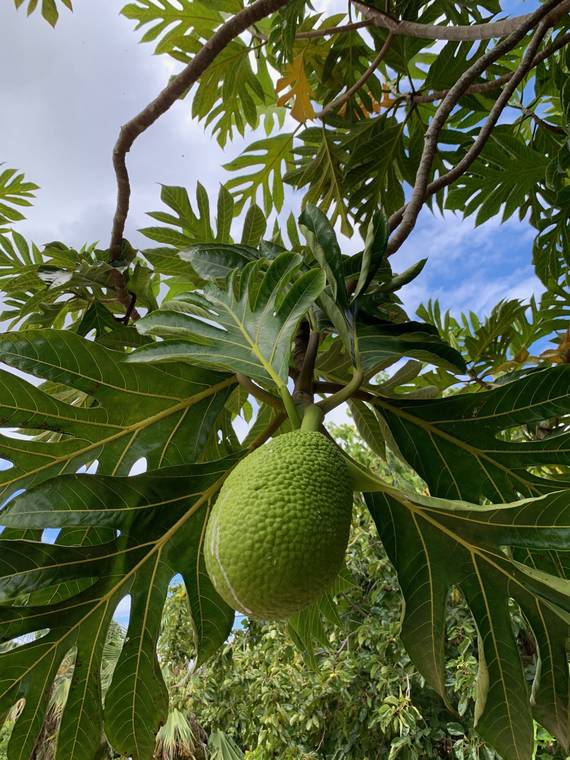Canoe plants vital to the first Hawaiians and us as well
When the first Polynesians arrived in the Hawaiian Islands, there were few edible plants. Initially, they probably lived on what could be taken from the sea. Of course, many birds flourished on the land. They and their eggs were fair game, as well. Luckily, the first people brought with them a great variety of plants like coconut, turmeric, sugar cane, bamboo, kalo, mountain apple, breadfruit and scores of banana varieties. They also brought pigs, chickens, dogs and rats.
Farming then was a necessity but as they became adapted to the new environment, they built a great society that lasted hundreds of years. Today, the pandemic affecting us is again requiring a new approach to life in the islands. More folks may need to think of producing at least some of our food here rather than depending on imports.
Farming for a living is tough. It is enough to drive you bananas, especially if you are a commercial banana grower in Hawaii. However, it is possible to supplement our food budget efficiently with easy-to-grow foods like bananas. Our islands are ideally suited for producing good banana crops, but diseases like panama wilt and bunchy top virus make it a real gamble.
The four secrets to success with bananas begin with the soil. Bananas thrive on good soil fairly rich in organic material. Plants prefer moist situations, provided the soil is well-drained. They will grow in nearly any soil except one composed almost wholly of sand or rock. Bananas are seriously damaged by salt water and by high chloride accumulation in soils due to intrusion of brackish water in coastal areas.
The second secret is wind. The leaves are likely to be damaged by strong winds, therefore, plants should not be planted in an exposed location.
Third is that varieties are important. There are more than 1,000 varieties worldwide and more than 100 here. Identification is not easy unless you really study. The best way to know your varieties is to obtain them from a reliable nursery. If you get keiki from a neighbor, make sure they are free of disease. The dwarf varieties like the cavendish or Chinese is better adapted to small garden conditions as it has a short, stout stem from 4 to 7 feet tall, with broad leaves borne on short pedicles. It is somewhat hardier and more wind resistant than taller varieties. The fruit is of medium size, thin skinned, and of good quality. Growing larger to 20 feet, the Brazilian banana types are hardy and prolific. “Williams Hybrid” is larger fruited than the other two and yet not as tall as the apple. It is superior for home gardens and is grown commercially. A good resource book for identifying varieties is “The World of Bananas in Hawaii” by Angela Kay Kepler and Francis G. Rust.
Fourth is fertilization. Banana plants are heavy feeders and respond well to fertilization. Most Hawaiian soils are deficient in the major elements, nitrogen, phosphorus and potassium, and may be deficient in the elements, magnesium, calcium, copper, manganese, boron and zinc. As a general rule, bananas will thrive on the fertilizer mixtures shown by experience to be necessary on other crops grown on each particular soil type. Mulches, compost and manures greatly benefit the plants as well.
While the plants are young it is best to remove all suckers but one. This will force strength into the flowering stalk and leave one or two to take its place after fruiting. This way, larger bunches of fruit can be expected. Later, when the mat has matured, from up to five stalks may be allowed to grow, if well-spaced.
Bananas harvested seven to 14 days before ripening and hung in a shady, cool place will develop their flavor and nutritive value better than if allowed to ripen on the plant.
Bananas are hardy as far as pests are concerned. Occasional sprays of fungicides may be needed to keep leaves and fruit free of streaking or spotting fungus organisms.
The main disease problem to avoid besides bunchy top virus is panama wilt. If the disease is present, plant resistant varieties like Williams and Cavendish, since there is no economic cure for the disease.
This information is supplied by the University of Hawaii College of Tropical Agriculture and Human Resources. For more information, contact the Master Gardener Helpline at 322-4893 in Kona or 981-5199 in Hilo.


